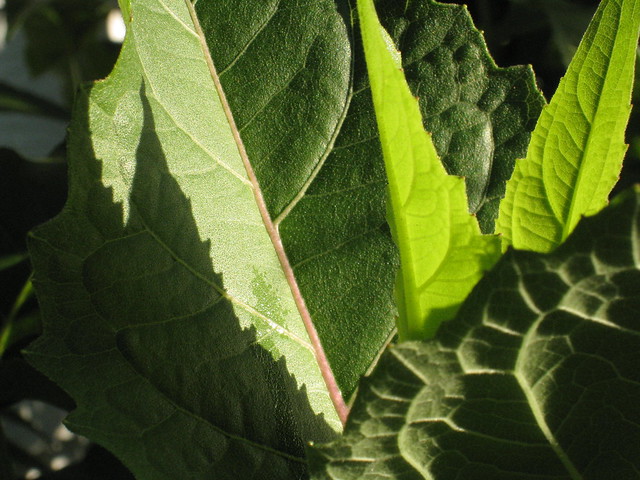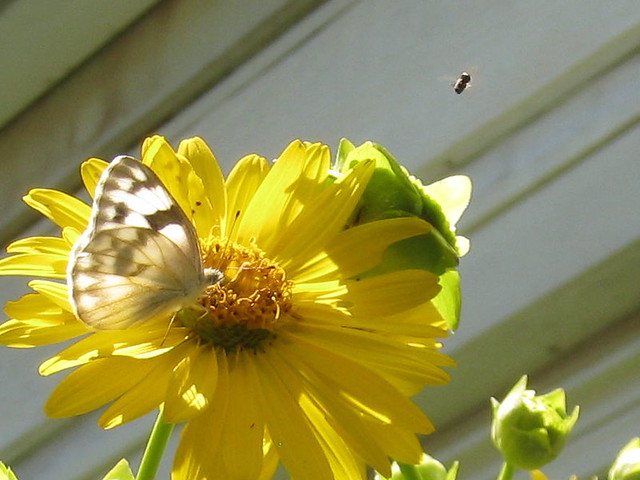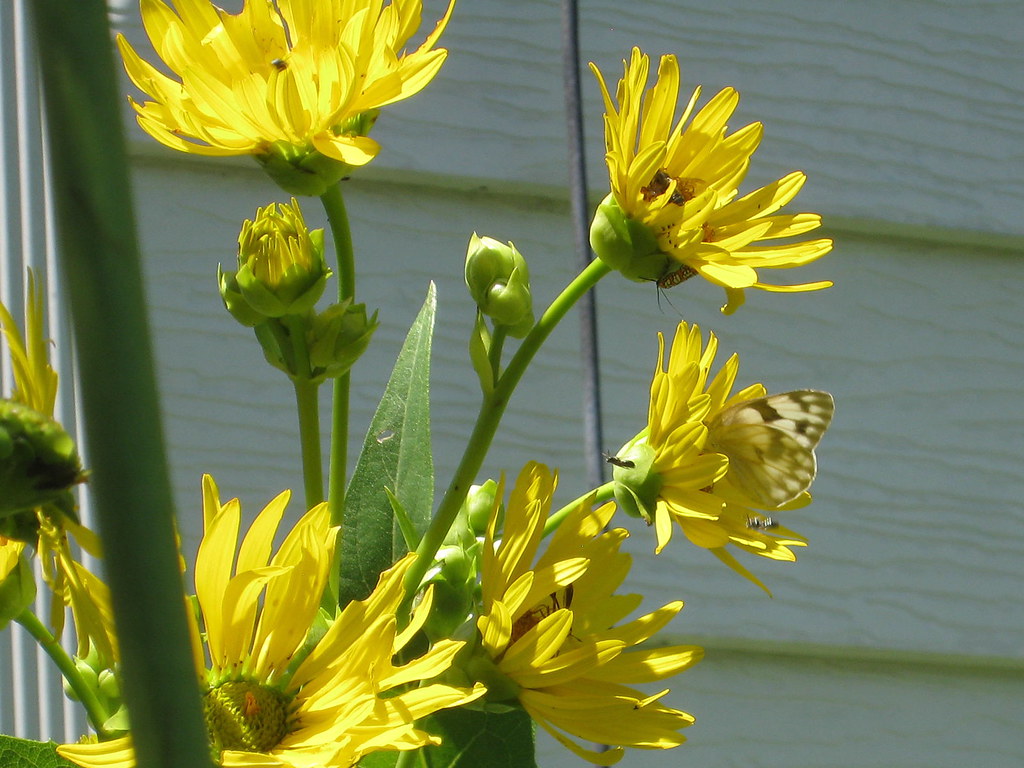I've been watching the pawpaw tree (Asimina triloba) for fruit pretty carefully—and hey! I got pawpaws! I didn't really expect to get fruit because this tree is "self-incompatible," meaning that the pollen of one flower cannot fertilize the ovary of another bloom on the same tree. In order to produce the fruit I've been waiting for, the bloom needs pollen from another unrelated pawpaw. Now I have only one tree, and the nearest one I can find is on the campus of the nearby community college, approximately 1,500 feet away.
How can pollen possibly travel that distance? It hitchhikes on a fly. This spring I got photos of what I believe are fruit flies on the blossom of my pawpaw…
but can we expect a 2.5 millimeter fly to travel 457 meters to find another tree's bloom? Well, either a fruit fly has no trouble flying almost 183 thousand times its body length, and has the power to smell a blossom 0.3 miles away, or—more likely—there's a closer pawpaw that the flies aren't telling me about.
I've blogged about my pawpaw tree and its pollinators in May and the how the Zebra Swallowtail uses it as a host play last July. Yes, I'm a little obsessed with it. I'm dreaming about tasting the ripe fruit in the fall, which I'm told tastes like a lemony banana. True, the squirrels will probably get it long before I do, but I can dream can't I?













